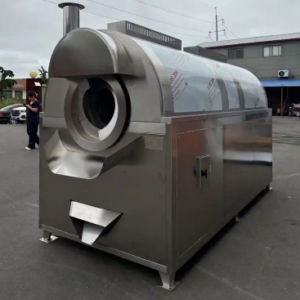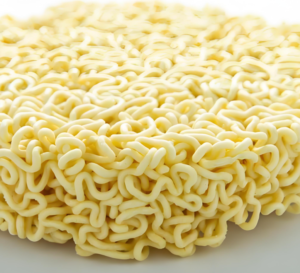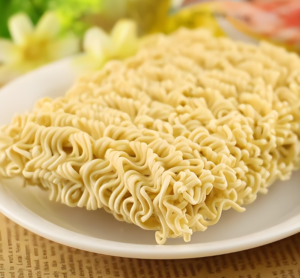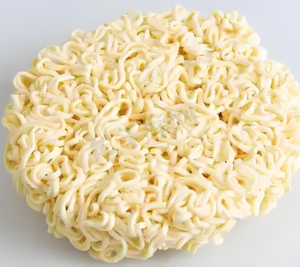<h1>The Evolution of Extruder Machines: A Comprehensive History</h1>Introduction
Extruder machines have revolutionized manufacturing across industries, from food processing to plastics and beyond. These devices use extrusion technology to shape materials by forcing them through a die, creating products like puffed snacks, pipes, and profiles. Understanding the history of extruder machines provides valuable insights for B2B professionals in foreign trade, helping them appreciate innovations that drive global supply chains. This article explores the key milestones, from early concepts to modern advancements, offering a roadmap for businesses seeking to leverage this technology.
double screw extruder
ToggleThe Origins of Extrusion Technology
Extrusion as a concept dates back to ancient times, where manual methods were used to shape materials. For instance, early civilizations like the Egyptians employed simple tools to extrude clay for bricks around 3000 BC. This rudimentary form laid the groundwork for more sophisticated machines.
In the 18th century, the Industrial Revolution sparked interest in mechanized processes. Inventors began experimenting with screws and presses to mimic natural extrusion. A pivotal moment came in 1797 when Joseph Bramah patented the first hydraulic press, which influenced extrusion principles. Although not a dedicated extruder, it demonstrated the potential for forcing materials through confined spaces.
By the mid-19th century, the food industry saw early applications. In 1845, the first recorded use of extrusion in food production occurred in Europe, where dough was forced through dies to create pasta shapes. This innovation marked the transition from manual to semi-automated processes, attracting attention in emerging B2B markets for efficient manufacturing.
These origins highlight how extrusion evolved from basic handcrafting to mechanical innovation, setting the stage for widespread adoption in foreign trade. Early extruders were crude but essential for scaling production, particularly in export-oriented industries.
The Industrial Era: Mechanization of Extrusion
The late 19th century brought significant mechanization to extruder machines. In 1879, Edwin A. T. Mills patented an early screw extruder for rubber processing, which became a cornerstone in the plastics industry. This device used a rotating screw to mix and propel materials, improving consistency and output.
As industrialization spread, extruders gained popularity in various sectors. By 1900, advancements in metallurgy allowed for stronger machine components, enabling higher pressures and temperatures. This era saw the first commercial extruders in the United States and Germany, where companies began exporting these machines to growing markets in Asia and Europe.
In the food sector, the development of puffed grain extruders in the 1920s transformed snack production. For example, the invention of the puffing gun by Alexander P. Anderson in 1901 led to modern extruders that could expand cereals and snacks quickly. This not only boosted B2B trade in food machinery but also influenced global dietary trends.
Foreign trade professionals benefited from these machines, as they standardized production for export. By the 1930s, extruder technology was integral to international supply chains, with manufacturers in the UK and USA dominating exports to colonies and allied nations.
20th Century Breakthroughs in Extruder Machines
The 20th century witnessed rapid breakthroughs, driven by World War II demands. Extruders were adapted for military applications, such as producing plastic components for aircraft and ammunition. In 1935, the first twin-screw extruder was developed in Germany, allowing for better mixing and versatility in materials like polymers and food ingredients.
Post-war innovation accelerated in the 1950s and 1960s. Companies like Werner & Pfleiderer introduced extruders with advanced controls, improving precision and energy efficiency. This period saw the rise of co-extrusion, where multiple materials are extruded simultaneously, enabling complex products like multi-layer packaging.
In the food industry, extruders evolved to produce ready-to-eat cereals and pet foods. By 1970, high-temperature short-time (HTST) extrusion processes were perfected, preserving nutrients while achieving desired textures. These advancements made extruders a staple in B2B exports, with China and India emerging as key markets for affordable machinery.
Globally, the extruder market expanded due to standardization efforts. Organizations like ISO set guidelines for extruder design, facilitating international trade and ensuring compatibility across borders. This era underscored the machine’s role in economic growth, with B2B professionals leveraging extruders for competitive advantages.
Modern Innovations and Technological Advances
Entering the 21st century, extruder machines have integrated digital technologies, enhancing automation and sustainability. Smart extruders now feature IoT sensors for real-time monitoring, reducing waste and optimizing production. For instance, AI-driven controls adjust parameters instantly, improving efficiency in high-volume manufacturing.
Sustainability has become a key focus. Modern extruders use eco-friendly materials and energy-efficient designs, aligning with global regulations like the EU’s Green Deal. Innovations in biodegradable plastics extrusion have opened new B2B opportunities, especially in foreign trade with environmentally conscious markets like the EU and North America.
In the food sector, advancements include high-moisture extrusion for meat alternatives, catering to the plant-based trend. Companies like Clextral and Buhler have developed extruders that mimic meat textures, driving exports from manufacturers in Europe to Asia-Pacific regions.
Furthermore, 3D printing integration with extruders has revolutionized prototyping. This hybrid technology allows for rapid design iterations, appealing to B2B clients in automotive and aerospace industries. As a result, extruder machines continue to evolve, supporting global trade by enabling customized, high-quality products.
Impact on Global Trade and B2B Markets
Extruder machines have profoundly influenced global trade, facilitating the export of processed goods and machinery. In B2B contexts, they enable manufacturers to meet international standards, such as FDA regulations for food safety, enhancing market access.
For example, China’s extruder industry has grown exponentially, with exports reaching over $1 billion annually by 2020. This dominance stems from cost-effective production and technological adaptations, making Chinese extruders popular in developing markets.
In Europe and the US, B2B trade focuses on high-end, customized extruders. Companies collaborate on R&D to innovate for sectors like pharmaceuticals, where precise extrusion ensures uniform drug delivery systems.
Challenges like supply chain disruptions highlight the need for resilient extruder networks. Foreign trade experts must navigate tariffs and tech transfers, using extruders as tools for economic diversification and sustainable growth.
Overall, the extruder market is projected to exceed $10 billion by 2025, driven by demand in emerging economies. This growth underscores the machine’s role in fostering international partnerships and B2B strategies.
Frequently Asked Questions
Below are common questions about the history and development of extruder machines, answered to provide clarity for B2B professionals.
- What is the primary function of an extruder machine? An extruder machine forces materials through a die to create continuous shapes, commonly used in food, plastics, and metals processing for efficient, scalable production.
- Who invented the first modern extruder? While early concepts existed, Edwin A. T. Mills is credited with patenting the first screw extruder in 1879, revolutionizing material processing in industrial settings.
- How have extruder machines impacted the food industry? They enabled mass production of items like puffed snacks and pasta, improving nutritional value and shelf life, which has boosted global food exports and B2B trade.
- What are the latest trends in extruder technology? Trends include automation via AI, sustainable materials processing, and integration with 3D printing, helping businesses reduce costs and meet environmental standards in foreign markets.
- Why are extruder machines important for foreign trade? They standardize production for international compliance, enhance product quality for exports, and support economic growth by enabling efficient manufacturing in global supply chains.
Conclusion
In summary, the history of extruder machines reflects a journey from ancient manual techniques to cutting-edge digital innovations, profoundly shaping industries and global trade. For B2B professionals, understanding this evolution highlights opportunities for efficiency, sustainability, and market expansion. By embracing ongoing advancements, businesses can stay competitive in the dynamic world of foreign trade, ensuring long-term success through informed strategies and collaborations.








